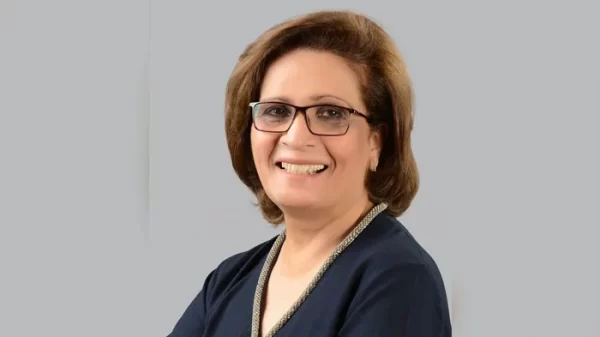FIFA World Cup 2022: How Qatar made a place among the richest countries, three big reasons
Doha, the capital of Qatar, will become the host of the Football World Cup in the year 2022, till a few years ago no one had predicted this.
A century ago, in the year 1922, this Gulf country spread over 12000 square kilometers was considered practically unfit for habitation. A large number of people living here were fishermen and pearl pickers and these people were nomads who used to roam around the Arabian Peninsula.
People who are in their nineties still remember the terrible economic crisis of 1930-40. This was the time when Japanese people started pearl cultivation and its mass production. As a result, the economy of Qatar had collapsed.
In the same decade, 30% of the population of Qatar emigrated and went abroad in search of better opportunities. According to the United Nations, the population here was reduced to 24 thousand.
But then there was a U-turn in Qatar’s economy and like a magic, Qatar emerged as the world’s largest oil reserve.
In the middle of the 20th century, Qatar’s treasury started increasing rapidly and it became one of the most prosperous countries in the world. Today Qatar is home to countless skyscrapers, spectacular artificial islands and state-of-the-art stadiums, so the BBC analyzes the three changes that have made Qatar one of the wealthiest countries in the world.
Discovery of oil in 1939 When ‘Black Gold’ was discovered in Qatar, Qatar was not an independent country and was under British rule since 1916. When Qatar discovered its black gold (oil well), it did not exist as a nation and was in the hands of the British, who took control of the region in 1916.
After several years of searching, the first deposit was found in 1939 at Dukhan, about 80 kilometers from Doha, on the country’s west coast.
However, it took a few more years for Qatar to capitalize on this discovery.
Christian Coates, a Qatar affairs specialist at the Baker Institution in the US, says that “the discovery came at the beginning of World War II, which halted oil exports until 1949, and therefore did not begin to make a profit.”
The export of oil opened up opportunities in Qatar and rapid change and modernization took place here.
Attracted by the booming oil industry, expatriates and investors flocked to Qatar, increasing its population. In 1950, the population of Qatar was less than 25,000, which increased to more than 100,000 by 1970.
The GDP of a country once known for its fishermen and pearl pickers grew to over US$300 million in the 1970s.
A year later, British rule came to an end and Qatar became an independent country. With this, a new era started here which made Qatar even more wealthy country.
natural gas exploration When engineers discovered the vast natural gas reserve in the North Field off the northeast coast of Qatar in 1971, few understood its significance.
It took 14 years and dozens of drills to realize that the North Field is the largest natural gas field on Earth, containing about 10% of the world’s known reserves.
From this it came to know that after Iran and Russia, Qatar is the largest country in the reserves of natural gas. The area of North Field is about 6,000 km², which is equal to half of the whole of Qatar. Qatar Gas, the largest producer of liquefied natural gas in the world, plays an important role in Qatar’s economic growth through its industry.
But like oil, earning from gas also took time. According to Coates, “For a long time, the demand wasn’t that big and there wasn’t much interest in developing it, however that all started to change in the 80s, when the infrastructure started to be built up.” It started being distributed within the country and in the 90s, arrangements were made to export it, which acted as an engine to further propel the economy.
1995 coup The graph of Qatar’s economic growth rate took a big jump with the advent of the 21st century. In the year 2003 to 2004, the GDP rate of Qatar increased from 3.7 percent to 19.2 percent. After two years in the year 2006, it increased to 26.2 percent.
This growing GDP rate has been the hallmark of Qatar’s strength for many years and this growth cannot be limited to the price of gas alone.
Mohammad Saidi is a professor at Qatar University and an expert in sustainable economics. He says- “These economic changes were taking place when political changes were also taking place in the country. In 1995, Hamad bin Khalifa Althani, the father of the current Amir Tamim bin Hamad Althani, assumed power, a controversial event for some. How did this happen? ,
Hamad bin Khalifa Althani succeeded his father while he was on a tour of Switzerland. The Althani family has been ruling Qatar for 150 years and this was not the first instance of this family seizing power in this way. But apart from the conspiracies of the palace, this change of power brought a big change in the economy of Qatar.
Investments made in extracting gas and oil, liquefaction and infrastructure prepared for exporting it worked to connect the country with foreign countries.
In 1996, a ship full of liquefied natural gas left for Japan. This was the first major export of Qatar gas and the start of a multi-billion dollar industry that catapulted Qatar to the pinnacle of global wealth. The per capita GDP in Qatar in 2021 was US$ 61,276. If we also look at the scale of purchasing power parity, then according to the World Bank this figure rises to $ 93,521, which is the highest in the world. Although its small population is a big reason. Qatar’s population is only around 300,000–350,000, most of whom are expatriates. Qatar government gives high salary as well as best education and health system to its people.
Challenges to Qatar’s Economy However, in recent years, Qatar’s economy has suffered and it has slowed down a bit. It faces challenges in the future, its dependence on fossil fuels and is currently facing severe scrutiny over its climate impact.
“In 2013 and 2014, oil prices fell and the need to change sources of income became the main topic of discussion,” says Saidi.
Following a diplomatic dispute with Qatar, Saudi Arabia, the United Arab Emirates, Bahrain and Egypt imposed a blockade between 2017 and 2021, posing a major challenge to Qatar’s economy.
According to Coates, Qatar has not explored any source of economic income other than gas and oil. And so now they want to expand the private sector. He is investing in it so that his dependence on hydrocarbons can be reduced.
A good example of this effort is the Qatar Investment Authority and Qatari funds owning a number of high-end properties in cities such as London and New York.
Coates believes that “Qatar is now focusing on making Doha a hub for events, conferences, meetings, and the World Cup in particular is a great example of this.”
Qatar has spent more than US$200,000 million to organize the Football World Cup, which is the most expensive FIFA World Cup ever in history. In this, infrastructure like eight stadiums, a new airport and a new metro line have been built.
A large part of the world questions the way Qatar’s infrastructure has been built. Many laborers involved in its construction come from countries like Nepal, India and Bangladesh who worked in inhumane conditions and many lost their lives.
In this, allegations of corruption and bribery are being made against Qatar and the International Federation of Association Football (FIFA). Many people are claiming that in the year 2010, Qatar got the hosting of the event in its name instead of bribe.
In the recent past, controversial statements regarding the LGBT community came to the fore from the Qatari authorities, which overshadowed her conservative image in front of the world.
Beyond these criticisms, it is clear that the event is much more than the World Cup for a small country that prospered in record time and is now positioning itself as a major geopolitical player under a more modern and progressive image. Trying to install in .








